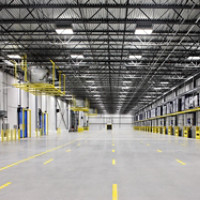
Distributed Energy Resources (DERs) for Resilience
Unlock the potential of distributed energy resources and empower energy independence
Trane can help you develop a comprehensive strategy incorporating the optimal DERs to meet your requirements and goals.

Distributed energy resources (DERs) are energy generation and storage technologies that can supplement or replace the power generation provided by central utilities. Stand-alone or connected through a microgrid, they can create organizational value by helping manage energy expenses, ensure reliability and accelerate sustainability efforts.
DERs technologies include:
- Generators/gensets
- Turbines
- Fuel cells
- Cogeneration or CHP
- Renewables
- Microgrid technology
- Storage technologies
Spotlight on Success

Key Results
Trane partnered with LOTT Cleanwater Alliance to install a new cogeneration system and blower retrofit at the Budd Inlet Treatment Plant. The projects, funded with assistance from Puget Sound Energy conservation incentives totaling 70 percent of the project cost, were completed prior to established deadlines.
The cogeneration system provides sufficient heating energy to serve the site as a “district” heating plant. It eliminates the need to flare excess digester gas and greatly reduces annual emissions, including over 1,800 metric tons of carbon dioxide. The projects are saving more than 2.8 million kilowatt hours per year, enough to power more than 210 Thurston County homes.
Resources & Insights

Three Ways Distributed Energy Resources Help Add Value to Your Building and Operation
June 21, 2023
Learn More


Thermal Storage Systems - Remarkable Resilience from a Sustainable Footprint
February 28, 2018
Read More
Related Product
Trane Thermal Energy Storage
Offset utility peaks by collecting, storing and discharging energy on an ongoing, on-demand basis
Related Solutions
-
 Renewable Energy Solutions
Renewable Energy Solutions
Ensure fewer carbon emissions while reducing power grid dependence and its costs
-
 Sustainability & Decarbonization
Sustainability & Decarbonization
Translate sustainability priorities into actionable tactics and strategies to lower carbon emissions
-
 Financing & Implementation
Financing & Implementation
Explore the best funding options for your goals—from grants and utility rebates to public and private partnerships




































































































